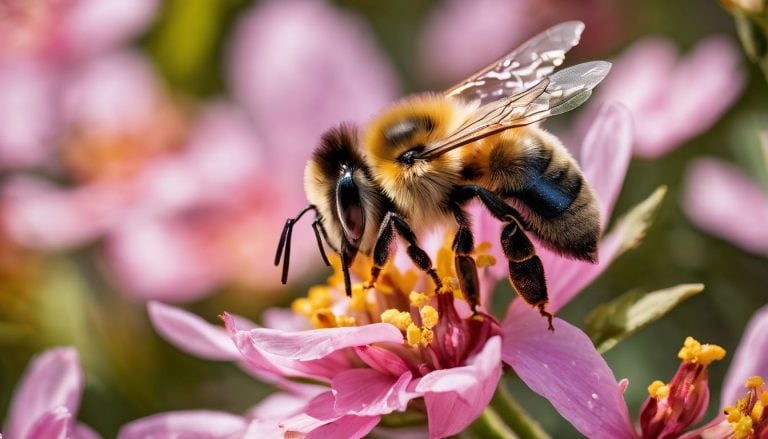Does Pheromone Spray Actually Work? Uncovering the Science Behind Its Effectiveness
Are you curious if that pheromone spray can actually make you irresistible? It’s a big claim, especially since pheromones play such a key role in how animals interact. This blog will guide you through the science to see if these sprays might hold the secret to attraction.
Stay tuned for some surprising discoveries!
Key Takeaways
- Pheromones are chemical messengers that influence behaviors such as mating and territory marking in animals and possibly attraction in humans.
- The scientific community is divided on whether human pheromones exist and if pheromone perfumes can genuinely enhance sexual appeal or social interactions.
- Olfactory receptors play a crucial role in detecting potential pheromone signals, which might impact behavior and emotions related to attraction.
- While some people report positive effects from using pheromone perfumes, the actual presence of effective pheromones in these products remains unconfirmed by definitive research.
- As studies continue, it’s important to be aware of the limitations and risks associated with pheromone sprays and perfumes due to the lack of regulation and conclusive evidence regarding their efficacy.
What are Pheromones and How Do They Work?
Pheromones are chemical signals produced by animals and insects to affect the behavior of others in their species. They can influence mating, territorial marking, and other social interactions.
In nature, pheromones play a crucial role in communication and survival.
Definition of pheromones
Pheromones are powerful chemical signals secreted by animals and humans alike, influencing behavior and communication within a species. These invisible yet potent substances can trigger a range of social responses, from marking territory to attracting a mate.
Much like an unspoken language, they convey vital information about an individual’s mood, sexual orientation, or even genetic makeup—all without the need for any direct interaction.
Chemical messengers such as these have been linked to how individuals find each other appealing on a subconscious level. Studies in osmology—the science of smell—show that our olfactory system plays a crucial role in detecting and processing these unique cues.
Moving beyond the realm of animals into human research reveals ongoing debates about how pheromones affect us and whether products claiming to contain them truly enhance attraction or influence social interactions.
Now let’s delve deeper into how they are produced and modify behavior across different species.
How they are produced
Pheromones are produced by various organisms, including humans, to communicate and influence behavior. They are typically secreted through sweat glands, saliva, urine, and other bodily fluids.
In animals, pheromone production is essential for signaling mating readiness or territory marking. In humans, pheromones are thought to be produced in specialized glands within the body.
Understanding how pheromones are produced sheds light on their potential impact on behavior and attraction among individuals. Ongoing research aims to uncover the specific mechanisms of human pheromone production and their effects on social interactions.
How they can affect behavior
Once pheromones are produced and released into the environment, they can affect behavior in various ways. These chemical signals have been linked to functions such as attracting mates, initiating social or sexual interaction, and even marking territory.
Research suggests that airborne compounds send signals about moods, sexual orientation, and genetic makeup, impacting how individuals within the same species respond to each other.
Additionally, pheromones play a role in sexual attractiveness among animals and are believed to influence human behavior as well.
Examples of pheromones in nature
Pheromones in nature signal various behaviors and interactions among animals. They serve as chemical messengers, influencing mating, social interactions, and territorial boundaries. Notably, pheromones play a key role in the following natural examples:
- Attracting mates: Pheromones emitted by female moths attract male moths for reproduction.
- Marking territory: Animals such as dogs and cats use pheromones to mark their territories and communicate dominance.
- Interaction between birthing animals and offspring: Many mammals use pheromones to facilitate bonding between mothers and newborns.
- Social interactions: Ants use pheromones to communicate about food sources, dangers, and many other aspects of colony life.
- Mating signals: For instance, male elephants release pheromones to signal their readiness to mate to nearby females.
Do Humans Have Pheromones?
Studies have shown conflicting evidence for the existence of human pheromones, but the relationship between smell and attraction suggests that there may be some truth to their effectiveness.
To uncover the science behind this, read on to explore the role of olfactory receptors and the potential impact of pheromone perfumes on sexual attraction.
Scientific evidence for and against human pheromones
– Scientific evidence for and against human pheromones
Research indicates a complex relationship between humans and the concept of pheromones. Below is a summary of the scientific evidence that explores the existence and influence of human pheromones.
| Evidence Supporting Human Pheromones | Evidence Against Human Pheromones |
|---|---|
| Airborne compounds have been linked to signaling moods, sexual orientation, and genetic makeup. | Definitive identification of specific human pheromones has not been achieved. |
| Some studies suggest pheromones play a role in sexual attraction and mate selection within species. | Skeptics argue that human behavior and attraction are too complex for a simple chemical signal to dictate. |
| Individuals in the same species are often attracted to each other through chemical messengers, according to osmology research. | Research on the effectiveness of synthetic pheromones in perfumes yields inconclusive results. |
| British scientist Tristram Wyatt notes that while the effectiveness of pheromone perfume is debated, some influence cannot be ruled out. | Direct evidence linking pheromone sprays to enhanced sexual attraction is limited and often anecdotal. |
| Olfactory receptors and their role in detecting pheromones suggest a possible mechanism for chemical communication and attraction. | Critical reviews challenge the idea that human behavior can be significantly altered by pheromone products. |
This table summarizes the current state of evidence about human pheromones. While there are hints at their existence and potential effects, the scientific community continues to investigate their role in human behavior and interaction.
The role of olfactory receptors
Olfactory receptors play a crucial role in detecting pheromones. These specialized sensory cells are located in the nasal cavity and are responsible for capturing chemical signals from the environment.
When pheromone molecules interact with these receptors, they initiate a cascade of reactions that send signals to the brain, influencing emotional and behavioral responses. Studies emphasize that olfactory receptors are pivotal in deciphering pheromonal messages, contributing to an individual’s social and sexual interactions.
The activation of olfactory receptors by pheromones triggers specific biological responses. Once these receptors identify the presence of pheromones, they convey information about attraction, mood, and genetic compatibility.
The relationship between smell and attraction
The role of olfactory receptors provides insight into the relationship between smell and attraction. Pheromones, chemical signals released by animals to influence behavior, play a significant role in this connection.
Studies have shown that these airborne compounds can convey messages about moods, sexual orientation, and genetic makeup. Furthermore, research has indicated that pheromones are linked to sexual attractiveness and contribute significantly to attraction among individuals within the same species.
Hence, the impact of smell on human attraction may be influenced by pheromones and chemical signaling.
Recent evidence suggests that individuals emit chemical messengers that could potentially affect social interaction and attraction. Moreover, scientists continue to investigate how these olfactory cues influence human behavior and relationships.
The Truth About Pheromone Perfumes
Pheromone perfumes claim to contain synthetic pheromones that can enhance attractiveness and sexual appeal. However, the effectiveness of these products is a subject of debate within the scientific community.
What are pheromone perfumes?
Pheromone perfumes are fragrances containing synthetic compounds designed to mimic natural pheromones. These compounds aim to trigger responses in others, such as feelings of attraction or a sense of comfort.
While research on the effectiveness of these perfumes is ongoing, early studies suggest that they may have an impact on social interaction and attraction through chemical signaling.
Scientists have confirmed that airborne compounds can send signals about moods, sexual orientation, and genetic makeup. However, the precise mechanisms by which pheromone perfumes work and their level of effectiveness continue to be debated among experts in the field.
In order to determine if the use of pheromone sprays and perfumes is effective for enhancing sexual appeal or attractiveness, scientists are studying how chemical messengers play a role within individuals in the same species.
Do they actually contain pheromones?
Pheromone perfumes and sprays marketed as containing pheromones might not always live up to their claims, with some debate over whether they truly contain these chemical messengers.
While research on the effectiveness of such products is ongoing, scientists have confirmed that specific airborne compounds serve as signals about moods, sexual orientation, and genetic makeup.
The use of synthetic pheromones in perfumes has been noted by experts but remains a topic of scientific scrutiny regarding their actual presence and impact on attraction among individuals.
The use of synthetic pheromones in perfumes
While the presence of natural pheromones in perfumes is still debated, synthetic pheromones have been incorporated into many fragrances. Synthetic versions are designed to mimic natural pheromones and enhance their effects on attraction and social interaction.
These artificial compounds are often included in perfumes to potentially influence behavior and improve the wearer’s appeal. Despite ongoing research into their effectiveness, synthetic pheromones in perfumes have gained popularity for their potential to influence interpersonal relationships and sexual attraction, particularly among individuals of the same species.
The use of synthetic pheromones in perfumes has sparked interest due to its potential impact on human interactions through chemical signaling. As researchers continue to study these artificial compounds, they aim to uncover more about how scent can influence emotions and behaviors beyond traditional fragrance appeal.
The effectiveness of pheromone perfumes
Transitioning from the use of synthetic pheromones in perfumes to the effectiveness of pheromone perfumes, it’s important to understand that research on this topic is ongoing. Pheromone perfumes have been designed to capitalize on the natural attraction process by enhancing or mimicking human pheromones within a fragrance.
Early studies suggest that these perfumes could potentially work, as scientists have confirmed that airborne compounds can send signals about moods, sexual orientation, and genetic makeup.
While the efficacy of pheromone perfumes is still under debate according to British scientist Tristram Wyatt, there is evidence linking these chemical messengers to sexual attractiveness and their role in attraction among individuals in the same species.
Pheromone perfumes and sprays may indeed impact attraction and social interaction through chemical signaling. They could work by influencing mood or perceptions rather than directly triggering automatic responses.
Enhancing Sexuality with Smell
The impact of smell on sexual attraction and how pheromone perfumes may enhance sexual experiences. Read on to uncover the science behind it all!
The impact of smell on sexual attraction
Pheromones play a pivotal role in sexual attraction, influencing an individual’s desirability to potential mates. These chemical signals can trigger subconscious responses, affecting mood and behavior.
Studies have indicated that humans emit pheromones through sweat glands, with certain compounds potentially enhancing perceived attractiveness. Research suggests that the sense of smell is closely linked to sexual preferences, indicating that scent-based signals may subconsciously influence mating behaviors.
The relationship between olfactory perceptions and sexual attraction has been the subject of ongoing scientific inquiry. Pheromone perfumes and sprays capitalize on these findings by attempting to enhance personal appeal through olfactory stimulation.
How pheromone perfumes may enhance sexual experiences
Pheromone perfumes can potentially enhance sexual experiences by subtly influencing attraction and arousal. These fragrances contain synthetic compounds that mimic natural pheromones, which are believed to trigger responses in the brain associated with sexual desire and intimacy.
Research suggests that these scents may play a role in signaling romantic interest and heightening sensory perceptions, contributing to increased chemistry between partners.
The use of pheromone perfumes is an evolving area of study, but some individuals report positive effects on their confidence and perceived attractiveness when using these products.
The limitations and risks
While pheromone perfumes and sprays have shown some potential effectiveness in attracting mates and influencing social interactions, their limitations and risks are still under scrutiny.
Research on the specific components of these products is ongoing, with questions about the actual presence of pheromones and their impact on human behavior. Additionally, there is a lack of regulation in the industry, leading to concerns about false advertising and misleading claims regarding product benefits.
The risks associated with using pheromone perfumes or sprays include potential allergic reactions to certain ingredients used in these products. Furthermore, reliance on such products for enhancing attraction may overshadow natural compatibility cues between individuals.
Conclusion
In conclusion, the effectiveness of pheromone sprays and perfumes is a topic of ongoing research and debate. Pheromones play a role in sexual attractiveness and social interaction through chemical messaging.
Research on human pheromones is still evolving, and there’s much to learn about their effects. Early studies suggest that pheromone perfumes may have an impact, although not necessarily in the way intended.
Scientists continue to uncover the science behind pheromone spray effectiveness, shedding light on its potential influence.
FAQs
1. What is pheromone spray and how does it claim to work?
Pheromone spray contains chemicals meant to mimic the natural pheromones that trigger attraction and social responses in humans.
2. Can pheromone perfume really attract others?
Some believe pheromone perfume increases attraction, but the effectiveness can vary greatly between individuals due to complex chemistry and reception of signals.
3. Are there any real benefits to using pheromone cologne?
Benefits of using pheromone cologne are debated; some users report increased confidence and attention, while science seeks more evidence on its impact on actual attraction.
4. What do reviews say about different pheromone sprays for men and women?
Pheromone perfume reviews often differ, with various experiences reported on platforms like Reddit; many highlight personal success stories or lack thereof when using sprays designed for females or males.
5. Is there scientific research supporting the use of pheromones in perfumes and colognes?
The science behind Pheromoness’ effects continues being researched, analyzing their release, communication potential, and actual influence in human interaction.









